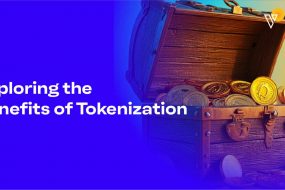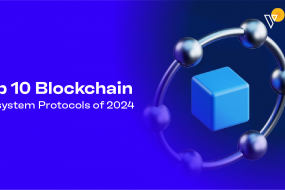
In the generation of superior Artificial intelligence and natural language processing, large language model (LLMs) has emerged as powerful equipment for information and generating human language. While utilizing pre-trained models from third-party providers may be handy, building a non-public LLM gives businesses greater control, customization, and statistics privacy. In this weblog post, we will explore the step-by-step technique of building a non-public LLM. From records processing to version schooling, evaluation, and remarks iteration, we will delve into the important elements of building a tailor-made language version that meets your precise needs. Let’s embark on the adventure of building your very own non-public LLM and unencumber the capability of personalized language know-how.
What are Large Language Models?
Large language models, also known as LLMs, are advanced AI systems that use deep learning to process human language at massive scales. LLMs work by analyzing vast amounts of text from the internet using techniques like word embeddings and attention mechanisms. Through this exposure to human language patterns at an enormous scale, LLMs can generate new text, answer questions, translate between languages, and more.
Some popular examples of large language models include GPT-3 from OpenAI which has over 175 billion parameters, and BERT models from Google which helped revolutionize natural language understanding. LLMs are a type of deep learning model called transformer networks that rely entirely on attention to draw meaning from language. Their ability to handle complex natural language tasks has transformed fields like conversational AI, information retrieval, and more.
Different Types Of Large Language Models
Different types of Large Language Models (LLMs) have been developed to tackle various natural language processing tasks. Some of the prominent types of LLMs include:
Autoregressive language models
Autoregressive language models are a form of large language models (LLMs) that excel at generating text by way of predicting the next word based totally on the previous context. These models follow a sequential technique, in which they generate textual content one phrase at a time, conditioned at the formerly generated phrases. Autoregressive models leverage the power of deep neural networks, especially transformer architectures, to seize and analyze the complex patterns gifted in the schooling facts.
During the schooling section, autoregressive language models are uncovered to great quantities of text records and discover ways to estimate the opportunity distribution of the following word given the context. This allows them to generate coherent and contextually applicable text via sampling from the learned distribution. Autoregressive LLMs have tested mind-blowing talents in duties which include text of completion, dialogue era, and tale generation. However, their technology procedure can be slower in comparison to different varieties of LLMs due to their sequential nature, which requires producing phrases one by one.
Autoencoding language models
Autoencoding language models constitute an awesome sort of massive language models (LLMs) that excel in encoding and interpreting text. Unlike autoregressive models, which generate text word through word, autoencoding models consciousness on learning contextual representations of the input textual content. The greatest instance of an autoencoding language model is BERT (Bidirectional Encoder Representations from Transformers). BERT is pre-trained using reconstructing masked or corrupted text input, efficaciously gaining knowledge of to encode and decode data.
During schooling, BERT is uncovered to widespread amounts of text information, allowing it to seize rich contextual embeddings. These embeddings are then used to carry out a wide range of downstream natural language processing duties, such as textual content class, named entity reputation, and sentiment evaluation. By leveraging bidirectional context and masked language modeling, autoencoding language models can seize a deeper understanding of language semantics and syntactic relationships. This makes them especially effective in responsibilities that require contextual knowledge and encoding data for the next processing steps.
Hybrid models
Hybrid models represent a flexible class of massive language models (LLMs) that integrate the strengths of autoregressive and autoencoding models. These models leverage the electricity of each sequential era and contextual embeddings to supply terrific textual content. In hybrid models, the encoder a part of the architecture, similar to autoencoding models like BERT, specializes in gaining knowledge of contextual representations of the entered textual content.
These representations seize the semantic and syntactic knowledge of the text. The decoder component, just like autoregressive models like GPT, utilizes the pre-trained embeddings to generate text sequentially, conditioning the era at the discovered context. By incorporating both autoregressive and autoencoding components, hybrid models can generate coherent and contextually relevant text even as benefiting from the deep contextual information supplied by the encoder. This mixture allows for more accurate and meaningful text generation.
Hybrid models have proven promising outcomes in diverse herbal language processing duties, inclusive of textual content summarization, question answering, and speak systems, providing a balance between generation first-class and contextual information.
How do Large Language Models work?
Large Language Models (LLMs) work by utilizing several fundamental building blocks that enable them to process and understand human language. These building blocks include tokenization, embedding, attention, pre-training, and transfer learning.
- Tokenization: LLMs wreck down input text into smaller units known as tokens, together with words, or characters. Tokenization allows the model to handle and technique text efficaciously.
- Embedding: LLMs use embedding techniques to represent each token as a numerical vector. Embeddings seize the semantic and contextual information of words, permitting the model to understand relationships and meanings within the text.
- Attention: Attention mechanisms in LLMs allow the model to attention to unique parts of the input text all through processing. Attention enables the model to assign varying ranges of importance to specific tokens, enhancing its information and context focus.
- Pre-training: LLMs go through pre-schooling, in which they are exposed to a large quantity of unlabeled textual content data. During pre-education, the version learns to expect lacking words or masked tokens, successfully taking pictures of grammar, syntax, and contextual records from the input data.
- Transfer Learning: LLMs advantage from switch gaining knowledge of, in which they leverage their pre-trained know-how on a big corpus to carry out unique downstream duties. By excellent-tuning the pre-trained model on task-precise categorized facts, LLMs can adapt their found-out representations to specific duties, consisting of sentiment analysis or text type.
By combining those building blocks, LLMs can manner and understand human language, generate coherent textual content, and perform several herbal language processing obligations with dazzling accuracy and fluency.
How To Build A Private LLM?
Building a private LLM involves several key steps, from data processing to model training, evaluation, and feedback iteration. Here is an overview of the process:
Step 1: Data Processing
The first step to constructing a personal LLM is collecting and processing the underlying facts with a purpose to be used to train the model. This includes amassing a massive trove of text statistics applicable to your domain, which could include petabytes of web pages, documents, books, and different publicly to-be-had language assets. The records then undergo vast preprocessing strategies commonplace in natural language processing.
This consists of disposing of HTML tags and different encoding, normalizing formatting and punctuation, splitting text into word pieces known as tokens, identifying components of speech and syntactic dependencies, and more. This data processing phase aims to take the raw unstructured facts and remodel them right into an easy, based layout that serves as a fantastic enter to train the device gaining knowledge of the version in subsequent steps. Proper information processing lays the groundwork for a powerful LLM.
Step 2: Model Training
Once the records are processed, the subsequent step is to outline and train the device gaining knowledge of the model. This entails selecting the precise version structure such as a Transformer community and selecting hyperparameters that control factors like layer sizes, interest heads, and regularization. The converted text from Step 1 is then used to train the model. Training algorithms like masked language modeling are applied which entails overlaying tokens and having the model expect the missing pieces to learn relationships between words. Continually evaluating loss functions facilitates monitor improvement as the model parameters are updated via numerous gradient descent iterations till the described schooling criteria are reached.
Step 3: Model Evaluation
Once the model is fully educated, the 1/3 step is to evaluate its overall performance. This involves using a separate validation dataset that changed into held out from the education facts. Various quantitative metrics are used to research how properly the version comprehended the language styles inside the text. For a generative model, metrics like perplexity and BLEU rating suggest how close the model’s very own textual content generation is to human-written references.
Qualitative techniques like having human evaluators interact in conversations with the version also provide insights. If the evaluation shows room for improvement, tweaks may be made to the education method, dataset, or model structure before finalizing the LLM. This step aims to validate the version works as intended earlier than shifting to real-world utility.
Step 4: Feedback and Iteration
The final step in constructing a private LLM is supplying remarks and constantly iterating to improve the version. Insights from the evaluation are used to refine the records, version, or schooling manner. For example, accumulating more nuanced examples of precise styles of language could deal with mistakes determined all through assessment. Hyperparameters like studying charge or batch length may additionally require similar tuning.
Additionally, incremental schooling techniques are hired where the version is similarly educated on expanded datasets or with adjusted parameters based on evaluation results. This iterative manner cycles through schooling, assessment, refinements, and retraining multiple instances. With each generation, the goal is to incrementally augment regions of weak points based on comments to achieve the high-quality acting private LLM for its meant application.
Conclusion
We’ve provided an up-to-end overview of the method to construct and install a self-hosted private LLM. While it calls for sizeable computing sources and dataset series, growing a customized model gives considerable long-term advantages over relying completely on public dealer APIs. It permits experimentation, ensures records privateness, and gives you possession over how the technology evolves. For many companies, a private LLM can empower innovation, accelerate AI protection paintings, or even help train new skills. With cautious plans and execution of the stairs mentioned, any enterprise or studies group can harness the strength of huge language models for particular packages.








